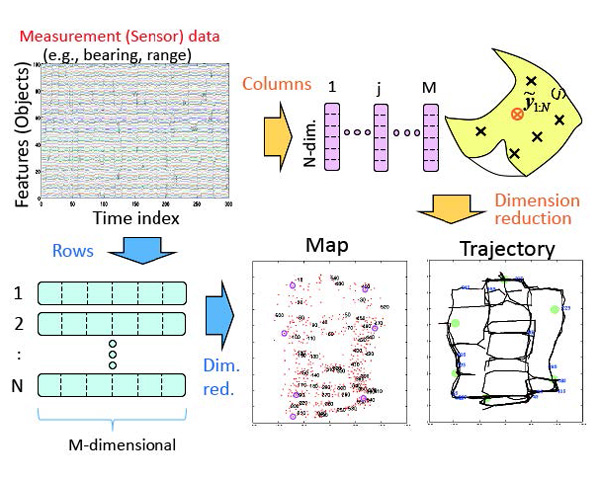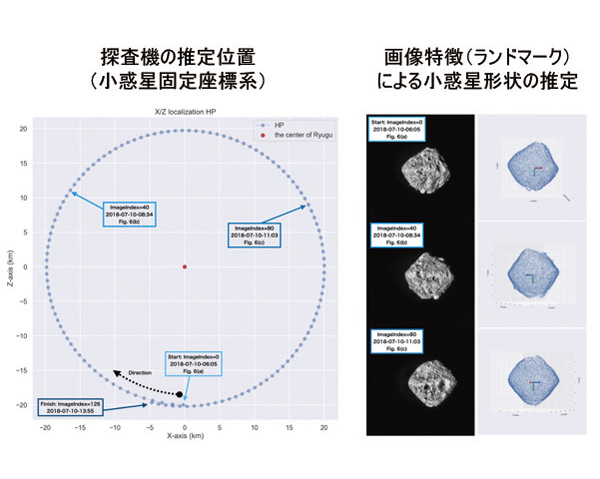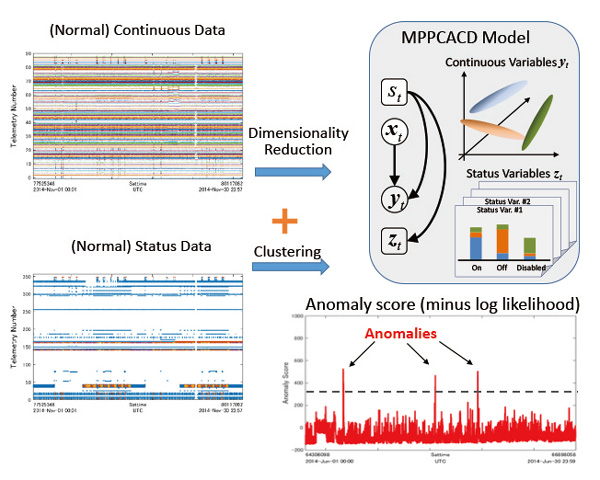Artificial Intelligence
Yairi - Takeishi Laboratory
Artificial intelligence for revealing data-generating mechanisms and monitoring health status of systems
We explore the foundational techniques for developing artificial intelligence, including machine learning and probabilistic inference, and apply them to practical challenges in various fields, such as aerospace engineering.
Unsupervised learning
We are interested in unsupervised learning for identifying cluster structures and low-dimensional latent spaces hidden in large amounts of high-dimensional data. We are studying not only the methods of clustering and dimensionality reduction but also exploring the ways to apply these techniques to tasks such as high-dimensional data visualization, anomaly detection, localization and mapping for mobile robots.
Inference and learning of dynamical systems
Dynamical systems with states changing from moment to moment are ubiquitous in natural and artificial phenomena. We are studying methods for the probabilistic inference of the states of the mathematical models of such systems, as well as methods for identifying the models from observed data. For example, we apply such methods to the reconstruction of an asteroid's shape and a spacecraft's position and attitude from images taken by an asteroid explorer. It can also be used to predict the behavior of a robot in a time series.
Data-driven system status monitoring
We apply the methods of unsupervised learning and learning dynamical systems to large amounts of sensor data from complex systems such as artificial satellites and production plants with the aim of studying techniques for monitoring whether the systems are operating properly. We are also researching methods to estimate how much longer equipment can operate normally.
Combination of machine learning and scientific models
In order to enhance the accuracy and stability of machine learning predictions, we explore the potential of combining mathematical models based on scientific theory with machine learning models. In addition to improving predictions, we also examine how such hybrid models can be interpreted and understood.

Localization and mapping using nonlinear dimensionality reduction

Estimation of asteroid shape and spacecraft position from images

Anomaly detection of satellite telemetry using unsupervised learning
Artificial Intelligent Laboratory has been researching AI from an engineering perspective since the establishment of the Department of Advanced Interdisciplinary Studies in 1992. Over these 30-plus years, the "cutting edge" of artificial intelligence has changed rapidly. However, we believe that attention should also be paid to AI that is not at the forefront, for two reasons. First, technologies that were initially "cutting edge AI" often become so integrated into society that they are no longer called "AI." In other words, technologies that become so commonplace that they are no longer referred to as "AI" have proven their value to the world. Second, there may be AI that is not currently at the forefront but could become "cutting edge" in the future. In fact, the basic ideas of deep learning, which is a backbone of today's AI, have existed since the 1960s but were not. mainstream for a considerable time. Therefore, we believe that "learning from the past" AI research is also important.
Member

-
- Professor
Takehisa YAIRI
Research Area: Artificial intelligence, Machine learning, Aerospace engineering, Prognostics, Health monitoring - Professor
Laboratory Homepage
Tags

